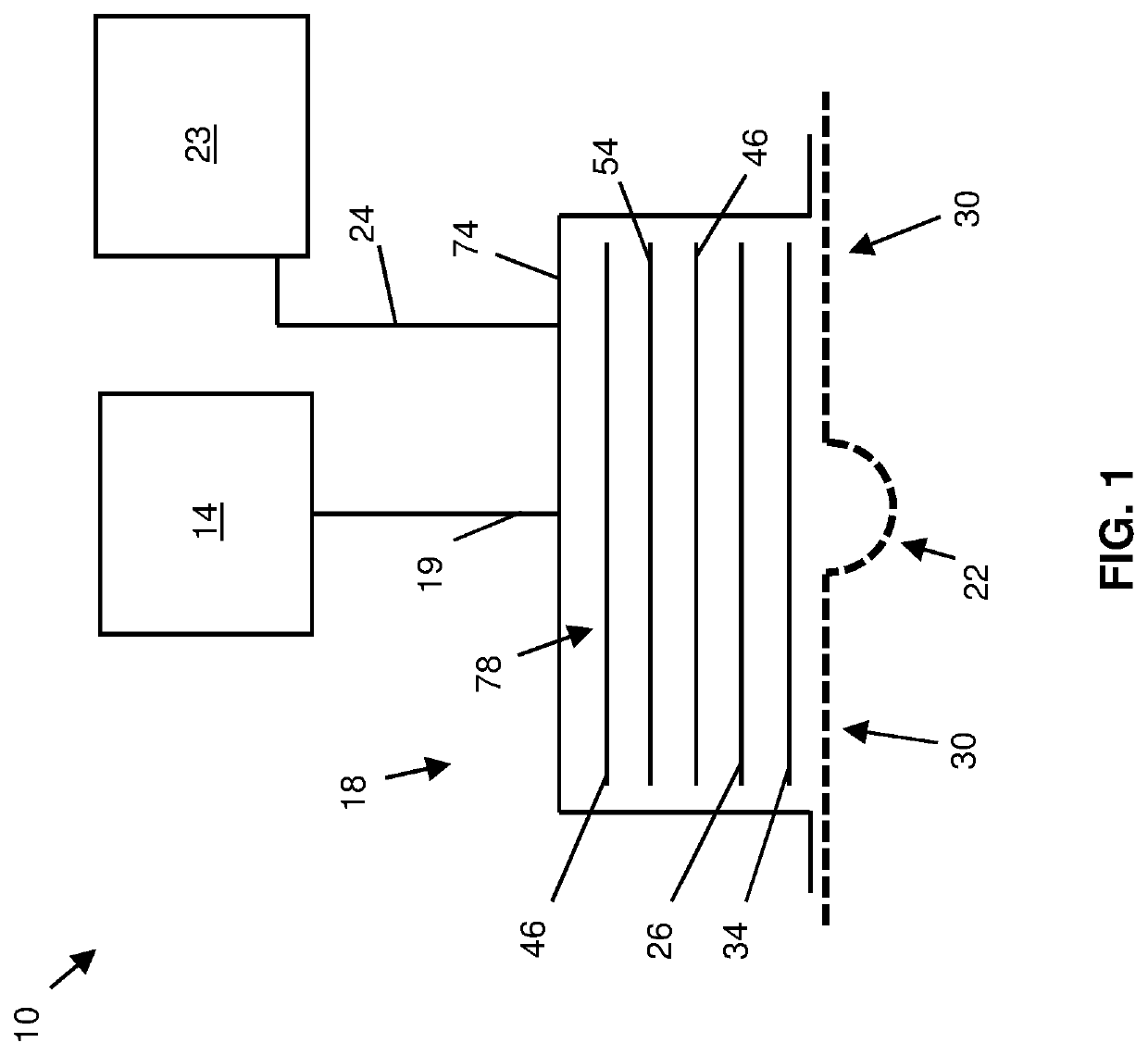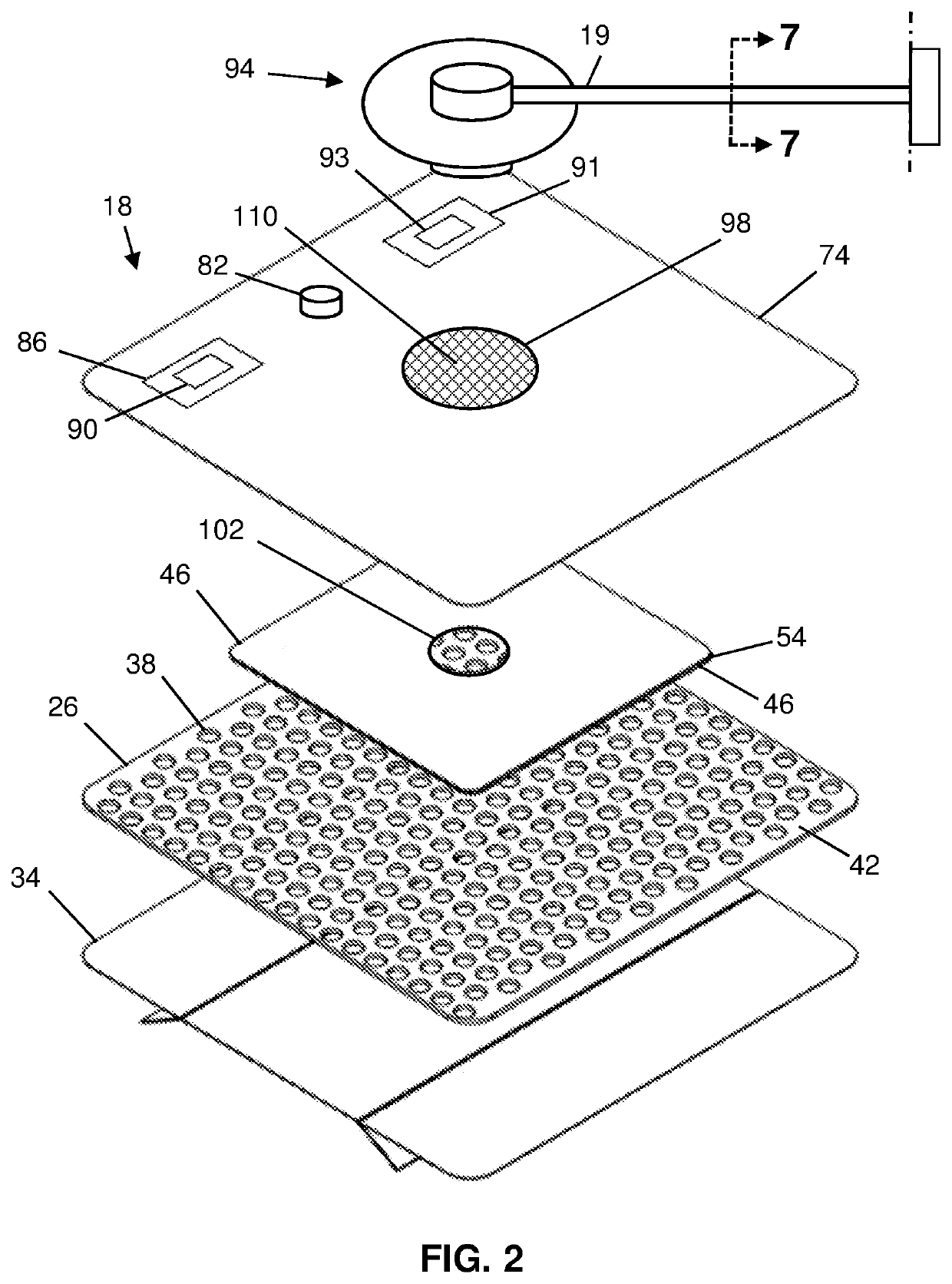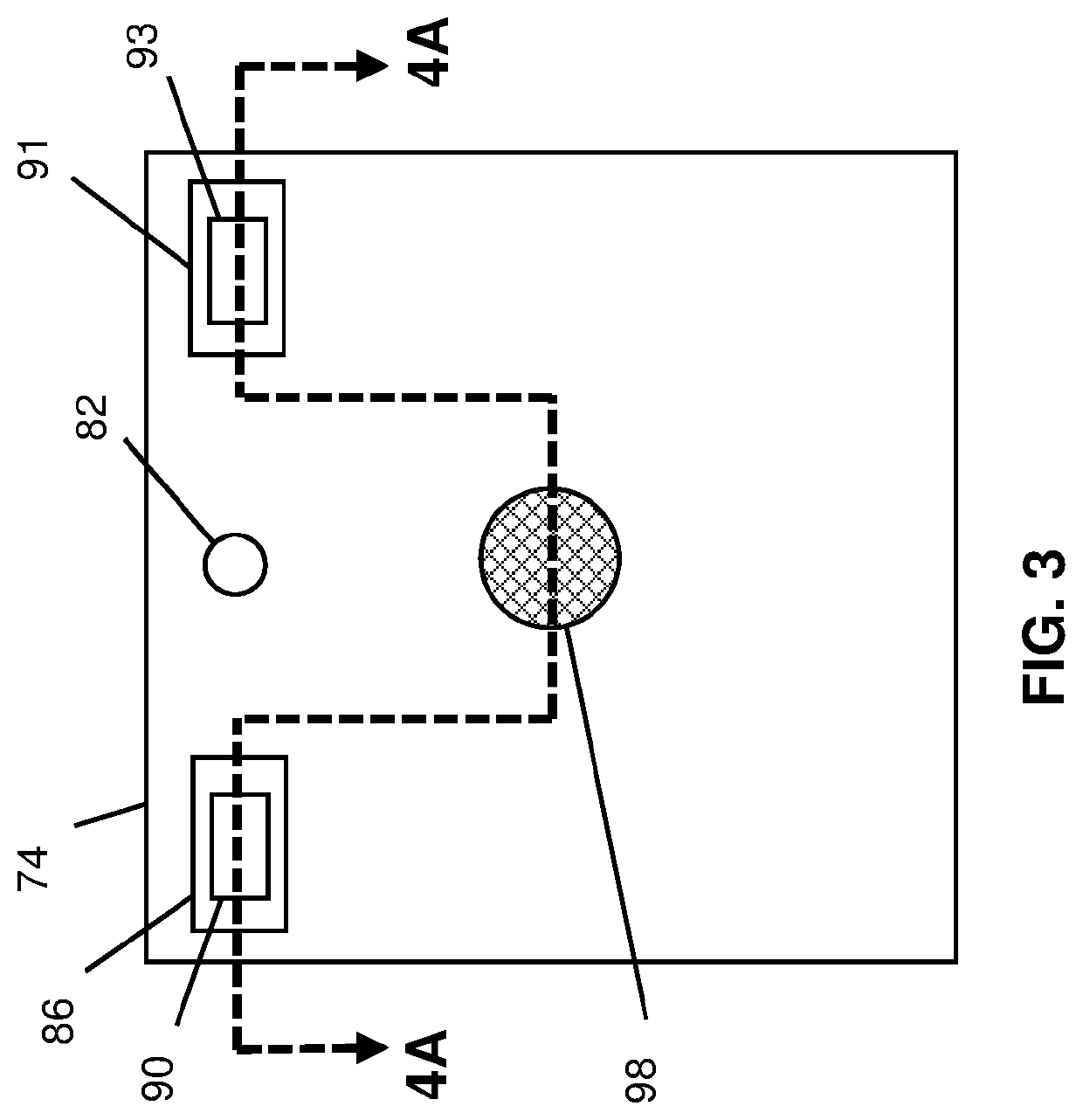Wound Dressings and Systems with Low-Flow Therapeutic Gas Sources for Topical Wound Therapy and Related Methods
- Summary
- Abstract
- Description
- Claims
- Application Information
AI Technical Summary
Benefits of technology
Problems solved by technology
Method used
Image
Examples
example 1
Changes in Oxygen Concentration within a Dressing Comprising the Gas-Occlusive Layer of the Present Disclosure
[0114]An SO-220 Fast Response Thermocouple Reference Oxygen Sensor, which is commercially available from Apogee Instruments, Inc., of Logan, Utah, USA, was used to evaluate the oxygen concentration within a first 4-inch by 5-inch dressing and a second 4-inch by 5-inch dressing, each having, in the following order, from farthest to closest to tissue (e.g., 22 or 30): an semi-occlusive film comprising a polyurethane adhesive, a super absorbent textile, a manifold comprising an open cell foam, and a patient interface layer comprising a hydrophilic foam. Each dressing also comprised a cannula inserted through the semi-occlusive film and into the manifold to deliver oxygen to the dressing. The second dressing, in contrast to the first dressing, additionally had a gas-occlusive layer (e.g., 74) comprising a polyurethane film coated with a layer of adhesive at least as thick as the...
example 2
Changes in Oxygen Concentration within a Dressing Comprising the Gas-Occlusive Layer of the Present Disclosure Before and after Liquid Instillation
[0116]An SO-220 Fast Response Thermocouple Reference Oxygen Sensor, which is commercially available from Apogee Instruments, Inc., of Logan, Utah, USA, was used to evaluate the levels of oxygen concentration within a 4-inch by 4-inch TIELLE™ Dressing, which is commercially available from Systagenix Wound Management, Limited, of Gargrave, UK (“Systagenix”). The dressing included, in the following order, from farthest to closest to tissue (e.g., 22 or 30): a moisture-permeable polyurethane film with a skin-friendly adhesive, a hydropolymer-based compressed superabsorbent material comprising LIQUALOCK™ Advanced Absorption Technology, which is commercially available from Systagenix, a manifolding assembly (e.g., 83) having a gas occlusive layer (e.g., 74a) adhered to a porous polyethylene manifold (e.g., 46a), the manifolding assembly also ha...
PUM
 Login to View More
Login to View More Abstract
Description
Claims
Application Information
 Login to View More
Login to View More - R&D
- Intellectual Property
- Life Sciences
- Materials
- Tech Scout
- Unparalleled Data Quality
- Higher Quality Content
- 60% Fewer Hallucinations
Browse by: Latest US Patents, China's latest patents, Technical Efficacy Thesaurus, Application Domain, Technology Topic, Popular Technical Reports.
© 2025 PatSnap. All rights reserved.Legal|Privacy policy|Modern Slavery Act Transparency Statement|Sitemap|About US| Contact US: help@patsnap.com



